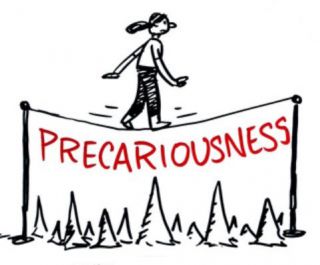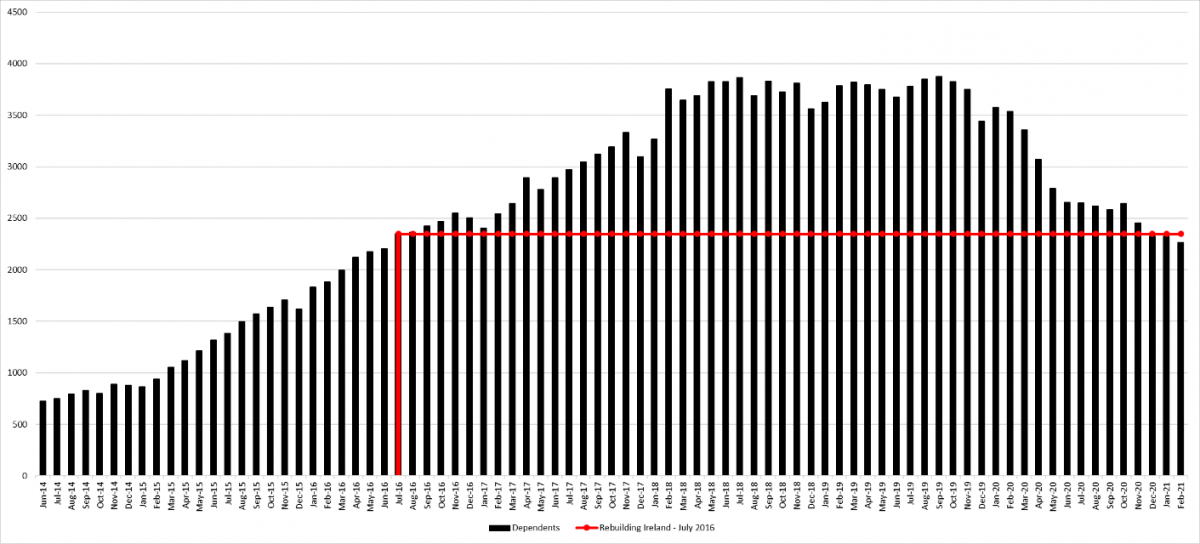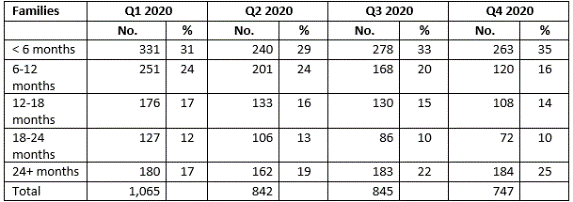Precarious Housing - The Long-term impact of Child and Youth Homelessness

New research from Canada indicates that adults who first experienced homelessness in childhood are more likely to experience precarious housing, even with Housing First Supports. This highlights the need for additional policy interventions to support the 3,000 children and young people in Ireland accessing emergency homeless accommodation today.
The Report ‘The association between experiencing homelessness in childhood or youth and adult housing stability in Housing First’, published in March 2021 states that while Housing First has acknowledged effectiveness in improving housing outcomes among adults experiencing homelessness and living with serious mental illness, some continue to experience difficulties retaining and maintaining housing. The study further found that participants who had first experienced homelessness in their childhood or youth (up to 24 years old) had about half the odds of experiencing housing stability within Housing First, as defined by spending at least 90 per cent of days in stable housing.
Housing First in Ireland
Housing First provides housing and wrap-around supports to rough sleepers and long-term users of emergency accommodation with complex health needs in Ireland. The National Implementation Plan for Housing First was published in 2018 and includes targets for each local authority, with an overall target of 663 new tenancies by the end of 2021. The Programme for Government further committed to the expansion of the Housing First programme.
According to the Homeless Quarterly Progress Report Quarter 4 2020[1], 508 individuals were in Housing First tenancies at the end of Q4 2020. The same Report states that 3,161 adults, or 63 per cent, had been accessing emergency accommodation for more than six months. Even if the full target of 663 tenancies were to be met by the end of this year, this only accounts for 21 per cent of adults in long-term homelessness as at the end of last year. This is grossly inadequate and continues to exclude the many children and young people in homelessness situations.
Child and Youth Homelessness – Official Data
As of the reporting week in February 2021, there were 2,264 children and young people accessing emergency homelessness accommodation. This represents the third month in a row in which the number of homeless children and young people was below that of July 2016, the month Rebuilding Ireland was introduced, but only just (Chart 1).
Chart 1: Dependents accessing Emergency Homeless Accommodation, May 2014 to February 2021

Source: Extracted from Monthly Homelessness Statistics, Department of Housing, Local Government and Heritage, various years.
In addition, some 776 young people aged 18 to 24 were also accessing emergency accommodation during this period in February 2021, for a total of 3,040 homeless children and young people.
This is not a short-term problem either.
One in Four Homeless Families in Emergency Accommodation 24 months+
Experts agree that early intervention is critical, however one in four families have been accessing emergency homeless accommodation for 24 months or more, while almost half have been doing so for a year or more.
The Homeless Quarterly Progress Reports published by the Department of Housing, Local Government and Heritage include a breakdown of the number of homeless adults and homeless families accessing emergency accommodation in the Dublin region by length of stay[1]. Table 1 sets out the data as presented in the four reports for 2020.
While the total number of families accessing emergency accommodation in Dublin has decreased between Q1 2020 and Q4 2020, the number of those staying 24 months or more has remained relatively static, while the proportion has increased to one in four of all Dublin-based homeless families.
Table 1: Families accessing Emergency Homeless Accommodation, 2020, by length of stay

Source: Homeless Quarterly Progress Reports, Q1-Q4 2020, Department of Housing, Local Government and Heritage.
The 747 families accessing emergency homeless accommodation as at Q4 2020 include 1,838 children, almost three in ten of which (n=543) were part of families accessing these services for two years or more.
Unfulfilled Duties
The 1919 Democratic Programme vowed “It shall be the first duty of the Government of the Republic to make provision for the physical, mental and spiritual well-being of the children, to secure that no child shall suffer hunger or cold from lack of food, clothing, or shelter, but that all shall be provided with the means and facilities requisite for their proper education and training as Citizens of a Free and Gaelic Ireland.” More than 100 years later, this duty has not been fulfilled.
The present system of Housing First in Ireland extends to homeless adults only. Social Justice Ireland has long-argued that Housing First should be extended to homeless families to ensure that parents and children can access both the secure accommodation and the necessary wraparound supports that they need. We once again call on Government to tackle the crisis of family homelessness by:
- Extending Housing First to families in emergency accommodation, particularly those accessing this accommodation long-term.
- Providing wrap-around supports to all homeless families to ensure early interventions are provided, particularly in the areas of child development and mental health.
- Increasing the supply of social and genuinely affordable housing by developing suitable sites on public lands.
[1]gov.ie - Homelessness data (www.gov.ie)
[1]gov.ie - Homeless Quarterly Progress Report for Q4 2020 (www.gov.ie)